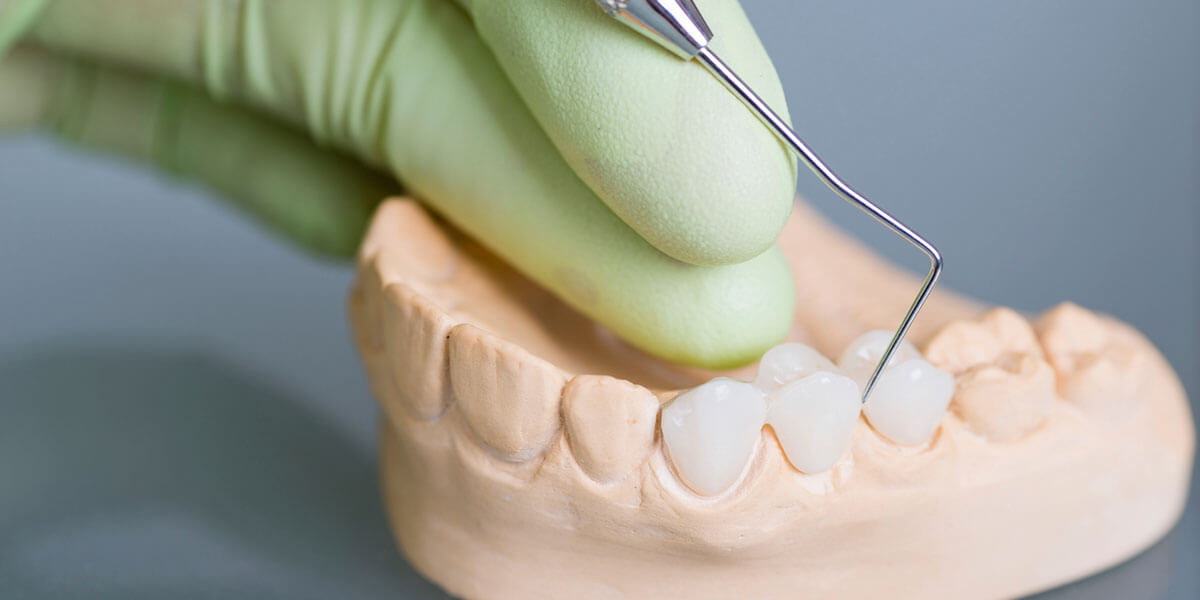Dental Bridges in Fleming Island

Doctors Lake Family Dental provides dental bridges in Fleming Island, FL. Call 904-264-6700 to learn more and schedule your reservation.
Dental bridges can be used to replace a single missing tooth or a few adjacent teeth. There are a few different options for bridges, but what they all have in common is that they use a support, or abutment, to hold artificial teeth in place.
CEREC Same-Day Bridges
At Doctors Lake Family Dental, we use CEREC technology to make the process of getting a bridge more convenient for our patients. The CEREC system uses state-of-the-art computer-aided design (CAD) to allow us to design a custom bridge just for you, then computer-aided manufacturing is used to make the bridge right in our office.
CEREC restorations are exceptionally realistic, using high-grade ceramic material that is carefully chosen to match your surrounding teeth and blend in perfectly with the rest of your smile. Your bridge will be designed for comfort and allow you to eat, speak, and smile just like you would with natural teeth.
Types of Dental Bridges
We take an individualized approach with all of our patients and choosing the right dental bridge is no exception. During your consultation, we’ll examine your teeth and gums, go over your dental history, and listen to your concerns and expectations. Together, we will select a dental bridge that restores the appearance of your smile and your oral health. Options include:
Traditional Bridges
A traditional bridge involves placing dental crowns on the two teeth on either side of the gap in your smile; these crowns are used as the abutments that hold your bridge in place.
Cantilever Bridges
Cantilever bridges are similar to traditional bridges, with the difference being that only one adjacent tooth is used as support. This type of restoration is typically used as a last resort when other options are not available, as it can place a great deal of stress on the supporting tooth.
Maryland Bridges
Rather than placing crowns on the abutment teeth, Maryland bridges are supported by bonding a metal or porcelain framework to the teeth on either side of the gap. The benefit of these bridges is that they don’t compromise the structure of otherwise healthy teeth, but they don’t have the stability of a traditional bridge.
Implant-Supported Bridges
Implant-supported bridges are completely self-supporting—they don’t rely on other teeth as abutments, which is better for your overall oral health. They can prevent and even reverse bone loss in the jaw and because they’re anchored in the jawbone, these bridges offer superior strength and stability.
Frequently Asked Questions About Bridges
What is better, a bridge or an implant?
Every patient has their own unique needs and circumstances, so we’d never make a recommendation without seeing you in person first! Generally speaking, implants are considered the better option because they look, function, and feel the most like natural teeth, they prevent bone loss in the jaw, and they don’t require support from other teeth.
What are the disadvantages of dental bridges?
The biggest disadvantage of dental bridges is the stress they place on the supporting teeth, which can leave them vulnerable to breakage. Implant-supported bridges are the only bridge option that doesn’t have this disadvantage.
Are dental bridges painful?
No, there’s no pain involved in getting a dental bridge. No matter which type of bridge you’re getting, we’ll always use local anesthetic to ensure that you don’t feel any pain and we provide all of our patients with a Comfort Menu, which has additional options to make your reservation a stress-free experience!
Can you bridge your front teeth?
Absolutely! The CEREC restorations we use are highly realistic, which makes them well-suited for replacing your front teeth.
